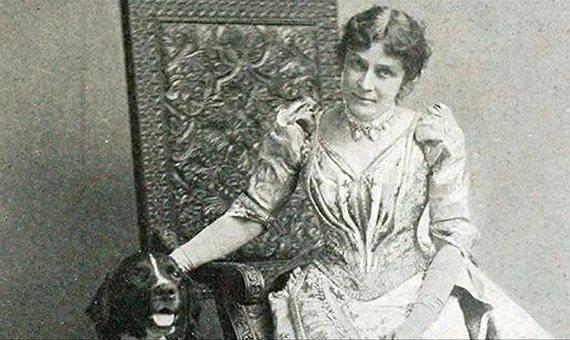Eunice Foote: The Climate Scientist History Forgot
The Woman Who Discovered the Greenhouse Effect Decades Before Men Were Given the Credit
Did you know that our understanding of climate change began with a woman scientist in 1856, more than three years before the man who gets all the credit? While Irish physicist John Tyndall is widely celebrated as the discoverer of the greenhouse effect, an American woman named Eunice Foote had already demonstrated how carbon dioxide traps heat in our atmosphere. Her groundbreaking climate research was overlooked for over a century, and her name remains absent from most science textbooks today.
Who Was Eunice Foote?
Born in 1819 in Connecticut, Eunice Newton Foote was a scientist, inventor, and women's rights advocate who defied the limited expectations placed on women of her era
She received an unusual education for a woman of her time at Troy Female Seminary (later Emma Willard School), one of the first institutions to offer women a scientific education.
Beyond her scientific pursuits, Eunice was a passionate advocate for women's rights. In 1848, she attended the historic Seneca Falls Convention—the first women's rights convention in the United States—and was one of the signatories of the Declaration of Sentiments, a groundbreaking document demanding equality for women.
Though she lacked formal scientific positions or university affiliations that were typically closed to women, she conducted scientific experiments in her home, using equipment she designed herself—a testament to her ingenuity and determination.
The Revolutionary Discovery
In 1856, Eunice conducted a remarkably simple yet profound experiment. She filled glass cylinders with different gases—including carbon dioxide—and placed them in the sun to measure how they heated up and cooled down.
Her results were striking. She discovered that the cylinder containing carbon dioxide heated up much more than the others and took longer to cool down. With remarkable foresight, she connected this finding to Earth's atmosphere, writing: "An atmosphere of that gas would give to our earth a high temperature; and if, as some suppose, at one period of its history, the air had mixed with it a larger proportion than at present, an increased temperature must have necessarily resulted."
In essence, Foote had discovered the greenhouse effect and even speculated about its impact on Earth's climate—the fundamental principle behind our modern understanding of climate change.
Overlooked and Underappreciated
Despite the significance of her discovery, Eunice faced insurmountable barriers as a woman scientist in the 19th century. She was not permitted to read her paper at the American Association for the Advancement of Science conference, where it was presented in August 1856. Instead, a male colleague, Professor Joseph Henry of the Smithsonian Institution, presented her findings.
Her paper was published in The American Journal of Science and Arts in November 1856, but it received little attention. Three years later, in 1859, John Tyndall conducted more sophisticated experiments on the heat-absorbing properties of gases and published his findings in the prestigious Philosophical Magazine. John, with access to better equipment and the full support of the scientific establishment, has since been widely credited as the discoverer of the greenhouse effect.
Eunice's pioneering work was essentially forgotten for over 150 years, only rediscovered by researchers in the early 21st century.
Why She Deserves to Be Remembered
Without Eunice Foote, our understanding of climate science might have been delayed. Her insight that carbon dioxide could warm Earth's atmosphere came at a time when few scientists were considering such questions.
She wasn't just a climate scientist—she was an inventor who held at least one patent, a dedicated experimentalist who worked without institutional support, and a women's rights advocate who fought for equality on multiple fronts.
Perhaps most remarkably, Eunice connected her laboratory findings to the broader natural world, making the conceptual leap that would eventually lead to our understanding of anthropogenic climate change. She recognised that changes in atmospheric composition could alter Earth's temperature—a fundamental insight that drives climate science to this day.
Let's Give Credit Where It's Due
Eunice Foote's story is a powerful reminder of how scientific contributions by women have been systematically overlooked throughout history. Her work demonstrates that scientific genius isn't confined to elite institutions or individuals with formal training—sometimes, it emerges from a passionate amateur working with homemade equipment.
The belated recognition of Eunice's work also raises important questions about scientific priority and credit. How many other women made significant discoveries that were ignored, forgotten, or attributed to men? How might our scientific understanding be different if all voices had been welcomed in scientific discourse?
In 2010, when climate researcher Raymond Sorenson rediscovered Eunice's paper and brought it to wider attention, he helped correct a historical injustice. Today, as we face the accelerating challenges of climate change, recognising Eunice's pioneering work is more important than ever.
What do you think? Have you heard of Eunice Foote before? Let's spread the word about her revolutionary contributions to climate science and ensure her rightful place in scientific history!


